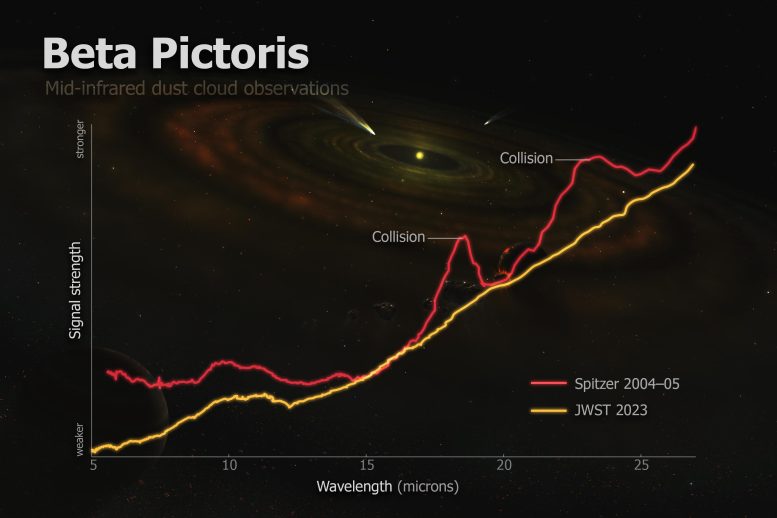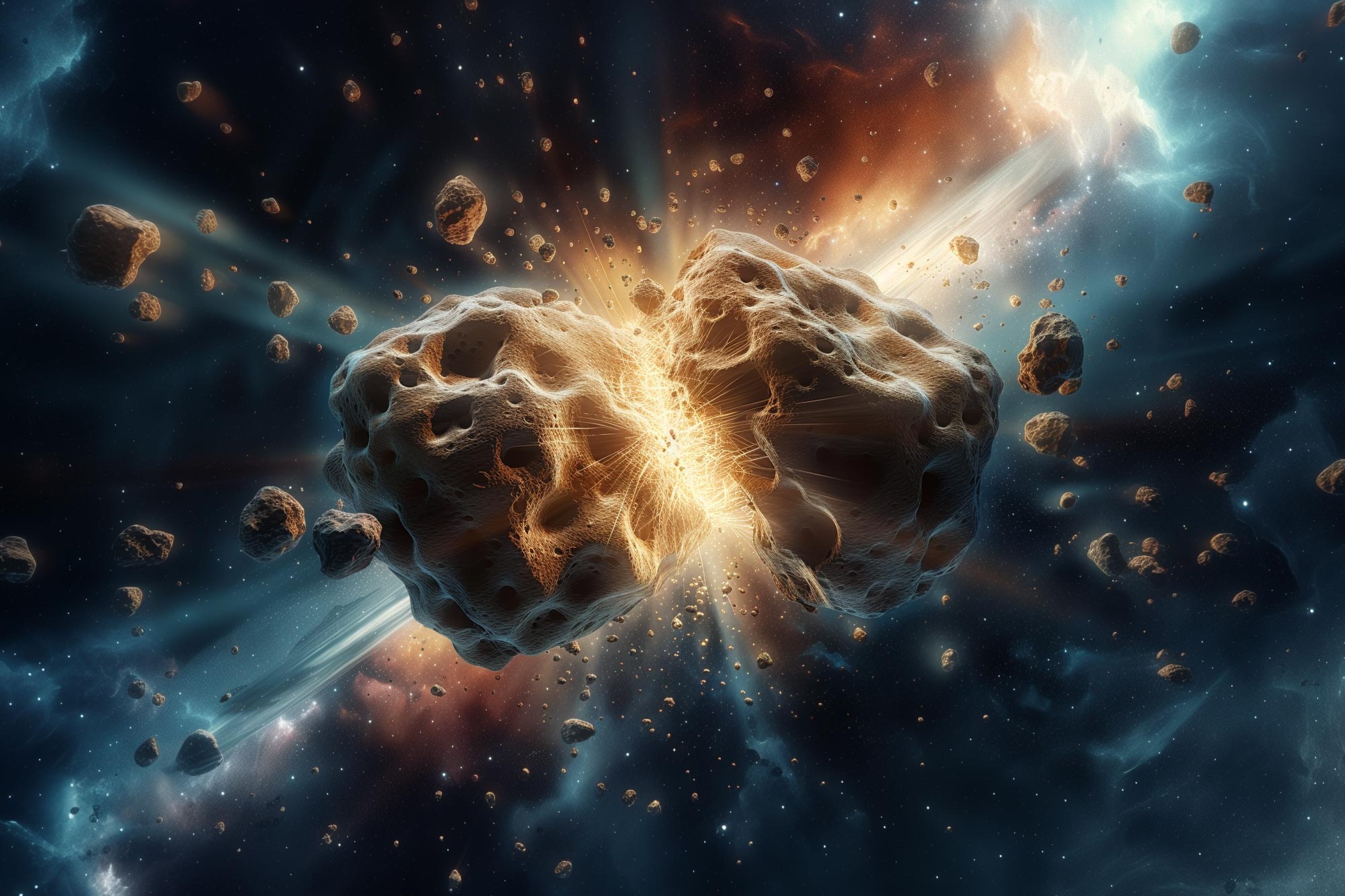Astronomers observed a giant asteroid collision in Beta Pictoris, using data from the Webb and Spitzer telescopes. The event, occurring 20 years ago, offers new insights into early planetary formation in this young star system. (Artist’s concept.) Credit: NASA
New observations spotlight the volatile processes that shape star systems like our own, offering a unique glimpse into the primordial stages of planetary formation.
Astronomers have captured a snapshot of a giant asteroid collision in Beta Pictoris, revealing insights into early planetary formation. The study, using data from the James Webb and Spitzer Space Telescopes, tracked dust changes around the star. The findings suggest a massive collision 20 years ago, altering our understanding of this young star system’s development.
Massive Collision in Beta Pictoris Star System
Astronomers have captured what appears to be a snapshot of a massive collision of giant asteroids in Beta Pictoris, a neighboring star system known for its early age and tumultuous planet-forming activity.
The observations spotlight the volatile processes that shape star systems like our own, offering a unique glimpse into the primordial stages of planetary formation.
“Beta Pictoris is at an age when planet formation in the terrestrial planet zone is still ongoing through giant asteroid collisions, so what we could be seeing here is basically how rocky planets and other bodies are forming in real time,” said Christine Chen, a Johns Hopkins University astronomer who led the research.
The insights were presented on June 10 at the 244th Meeting of the American Astronomical Society in Madison, Wisconsin.

Two different space telescopes took snapshots 20 years apart of the same area around the star called Beta Pictoris. Scientists theorize that the massive amount of dust seen in the 2004–05 image from the Spitzer Space Telescope indicates a collision of asteroids that had largely cleared by the time the James Webb Space Telescope captured its images in 2023. Credit: Roberto Molar Candanosa/Johns Hopkins University, with Beta Pictoris concept art by Lynette Cook/NASA
Significant Changes in Dust Energy Signatures
Chen’s team spotted significant changes in the energy signatures emitted by dust grains around Beta Pictoris by comparing new data from the




















Discussion about this post